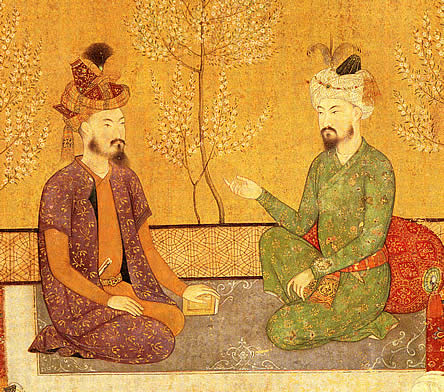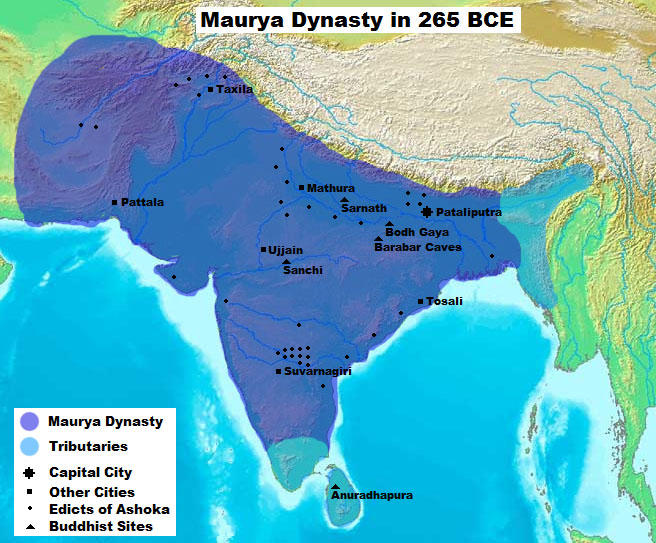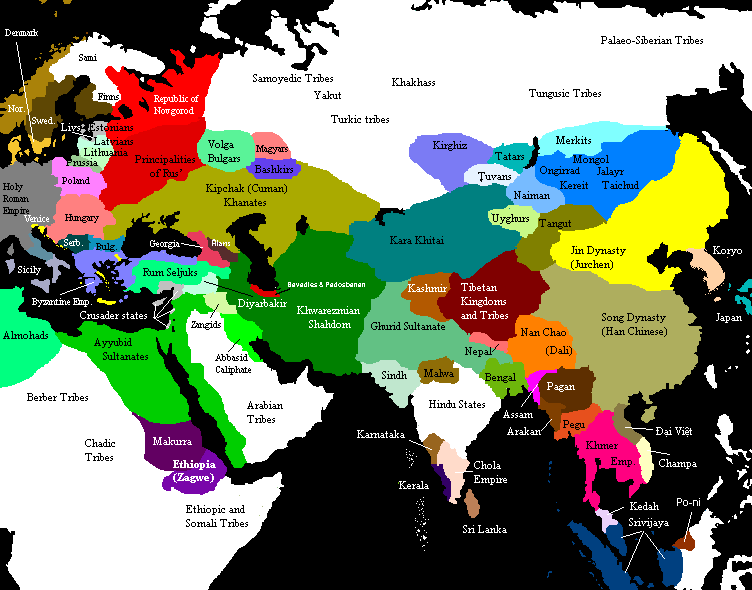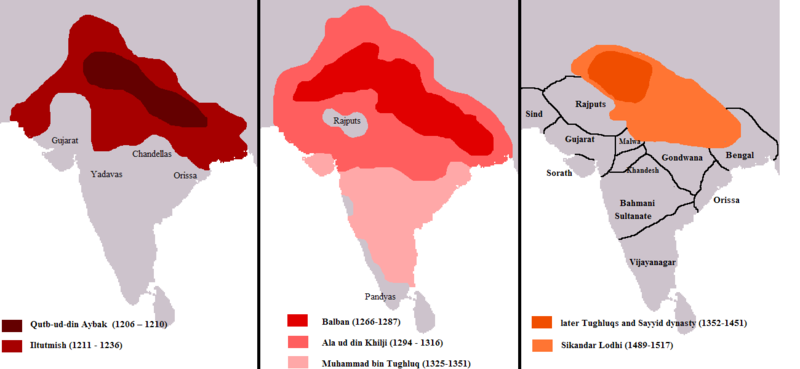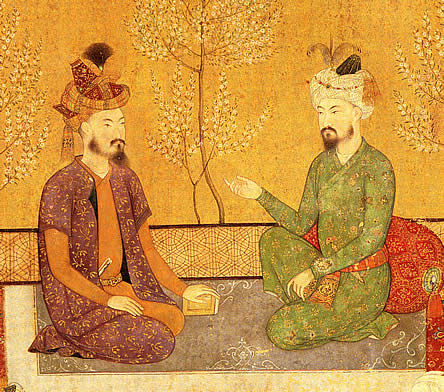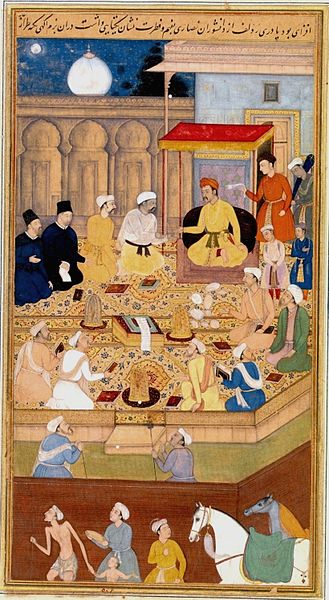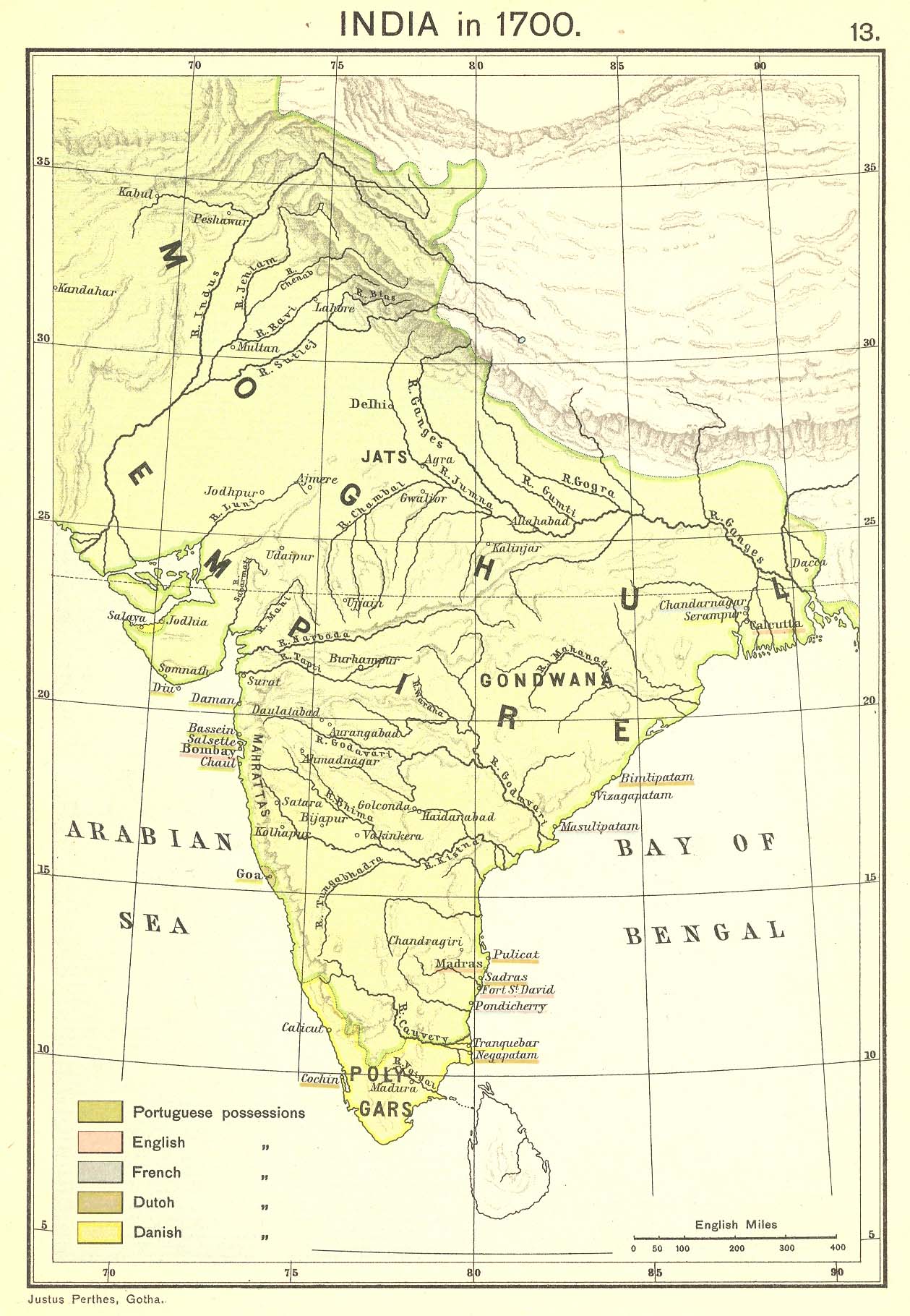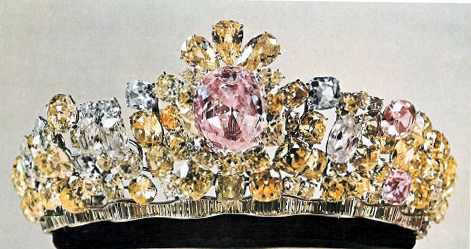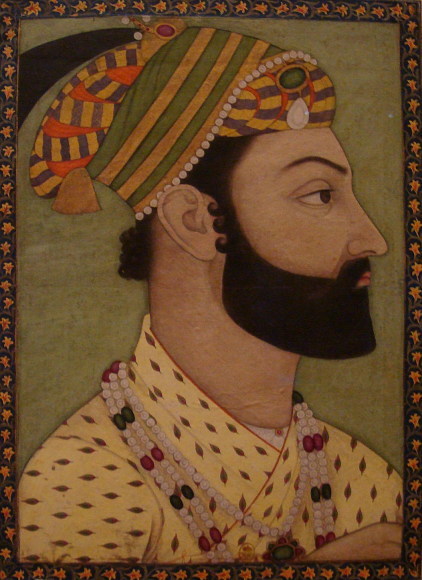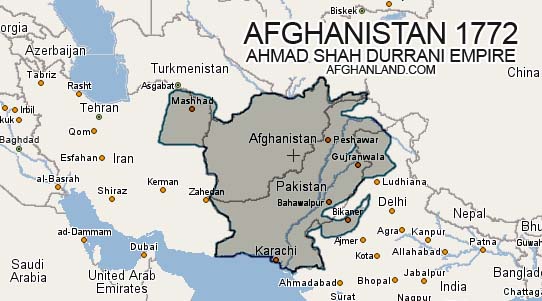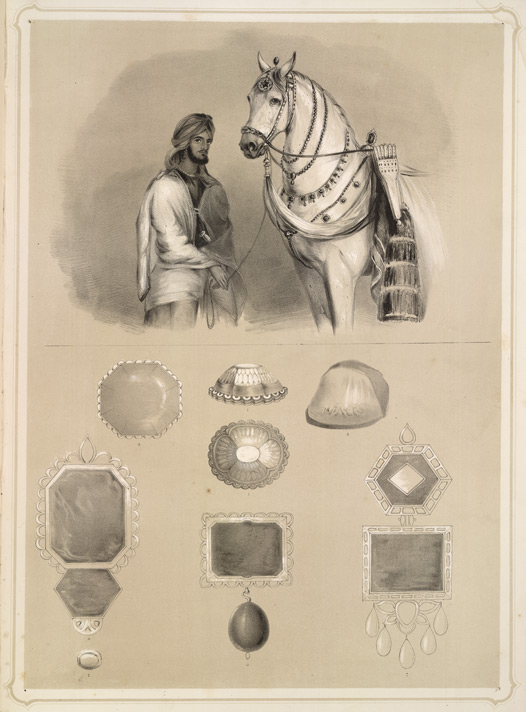This is the second part of the Koh-i-Noor Diamond Series. In the first part, we looked at the Legend of the diamond. In this article, we’ll discuss it’s history until the 17th century.
If you missed the first part and you don’t want to read about the diamond legend, you should at least read the short description about it.
Not many things are known about the early history of the Koh-i-Noor diamond.
It must have been pass down through lineage, from a ruler to another, in the Maurya Empire (332-185 BC). The Maurya Dynasty was the first one to put India under one rule, conquering almost the entire country.
Maurya Empire at its maximum extent (Dark Blue), including its vassals (Light Blue).
After the death of Ashoka the Great (304 – 232 BC), the Maurya Empire starts to dismember and small principalities are formed.
In time, the region of Malwa will rise and become the new home of the Koh-i-Noor diamond.
Malwa before its conquest by the Delfi Sultanate.
Profiting from the internal strife, the foreign Muslims starts to plunder and conquer the divided states.
In 1295 Ala-ud-din Khilji, military commander of the Delfi Sultanate, defeats Malwa and seizes the Koh-i-Noor.
One year after, he murders his uncle, sultan Jalal-ud-din, and becomes the new sultan.
The diamond will be in the possession of the Delfi Sultanate until the rise of the Mughal Empire.
Delhi Sultanate – five dynasties: the Mamluk dynasty (1206 – 1290); the Khilji dynasty (1290 – 1320); the Tughlaq dynasty (1320 – 1414); the Sayyid dynasty (1414 – 1451); and the Afghan Lodi dynasty (1451 – 1526)
Another foreign threat appears, the proud warrior Babur (means “tiger”), descendant of Ghenghis Khan and Timur (Tamarlane), comes from the north.
In 1526, at Panipat, Babur defeats Ibrahim Shah Lodi (the last of the Delhi sultans) and his ally, Rajah of Gwalior, setting the base of the Mughal Empire.
His son and commander Hamayud takes the Koh-i-Noor and presents it to him.
Other than a military genius, Babur was also a great writer, leaving us his memoirs, the Baburnama (Chagatai/Persian: “Book of Babur” or “Letters of Babur”). This book contains important historical and geographical information, treating subjects as: nature, society, politic, economy etc. Also is one of the first historical references regarding the Koh-i-Noor.
Babur and his heir Humayun.
After Babur’s death, Hamayun, instead of consolidating the empire his father left him, he starts a new campaign of conquests. Because of that, his fresh acquisitions, Malwa and Gujarat, are easily lost and his empire crumbles.
The competent and efficient afghan ruler Sher Shah Suri defeats Hamayun and force him to flee to Iran, leaving his family behind in India.
The Shah of Iran Tahmasp I grants him shelter and promise Hamayun military aid to regain his kingdom. As an expression of gratitude the Mughal gives the Koh-i-Noor and other jewels to the Shah.
Later, in 1547, the diamond will be sent back to India as a gift for Shah Burhan Nizam, in Ahmednagar.
After his rival death, Sher Shah Suri, Hamayud returns to India and recaptures the lost territories.
The Koh-i-Noor returns to the Mughal dynasty in 1600, when Akbar the Great (14 October 1542 – 27 October 1605) attacks and captures Ahmednagar.
Forced to rule at the young age of 13 years because of his father sudden death, Jalal-ud din Muhammad Akbar will manage to extend the Mugal Empire over most of the Indian sub-continent, during his rule.
At his court culture and art are encouraged and free religious discussion takes place.
Akbar holds a religious assembly of different faiths in the Ibadat Khana in Fatehpur Sikri
In the flourishing era that follows, the famous diamond will pass peacefully, by inheritance to his successor Emperor Jahangir and later to Emperor Shah Jahaan, the successor of Jahangir.
In 1657, when Shah Jahaan falls seriously ill, a war of succession breaks out between the rightful heir Dara Shikoh, his eldest son, and Aurangzeb, his third son. Aurangzeb wins and imprisons his father in his own palace at Agra Fort. After Jahaan death, Aurangzeb takes the Koh-i-Noor, and then it is passed from a successor to another.
Mughal Empire in 1700.
After recapturing the lost Persian territories from the hands of the Russians and Ottomans, and restoring the Persian Empire, the general Nadir Shah sets his eyes on the Indian sub-continent.
In 1739, the mighty Nadir Shah of Persia invades Delfi and Agra and plunders them. He took so much wealth back to Iran that he stops taxation for a period of three years. The loot included the Mughal crown jewels too – the Koh-i-Noor, Darya-ye Noor, Nur-ul Ain, the Peacock Throne etc.
The Noor-ol-Ain pink diamond mounted in a Tiara of the same name
Because of his cruelty, Nadir Shah will be assassinated by his own troops in 1747.
One of his commanders, the Afghan Ahmad Khan Abdali takes the famous diamond and brings it to his homeland.
With the support of his Pashtun tribes and allies, be becomes Shah and starts a campaign of conquests, profiting of the weakened state of his neighbors. In a few years he manages to extend the Durrani Empire so much that it was the second largest Muslim Empire, after the Ottoman Empire.
Founder of the Durrani Empire, Ahmad Khan Abdali is also considered the founder of the modern state of Afghanistan.
A 1757 miniature of Emir Ahmad Shāh Durrānī, in which the Koh-i-Noor diamond is seen hanging on the front of his crown, above his forehead.
In 1772, after his death, Ahmad Shah is succeeded by his son Timur Shah.
A struggle for power will be the outcome of Timur Shah death, in 1793. His fifth son Zaman with the help of Sardar Payenda Khan, a tribal chieftain of the Barackzay tribe seized the power and the Koh-i-Noor too.
In 1800 he is defeated by his brother Mahmud and his allies, Fath Ali Shah of Persia and The British. Blinded and imprisoned, Zaman Shah hides the famous jewel in the prison’s wall.
Later, in 1803, Mahmud Shah is defeated and imprisoned by another brother, Sha Shoja.
Zaman Shah reveals to his ruling brother the hideout location of the Koh-i-Noor.
Defying all odds, Mahmud Shah escapes from prison and later, in 1810, regains back his throne.
The Afghan Durrani Empire
Shoja and his brother Zaman flee to Punjab, seeking refuge at his ruler, the Sikh Maharajah Ranjit Singh.
Assuming that Shah Shoja carries the Koh-i-Noor with him, the Maharajah Ranjit Singh desires to take it as a price for their sanctuary. Shah Shoja denies having it, inventing different lies. Pressed by the ruler of Punjab, he dispatches a large white topaz to him. The court jewelers tells the king this is not a diamond and as punishment, Shoja meals are cut for two days and a guard posted outside his house. Finally Shoja invites Ranjit Singh at his house and gives him the Koh-i-Noor.
Lithograph showing one of the favorite horses of Maharaja Ranjit Singh with the head officer of his stables and his collection of fabulous jewels including the Kohinoor diamond marked as number 1
The next article will continue the famous Koh-i-Noor diamond history.
